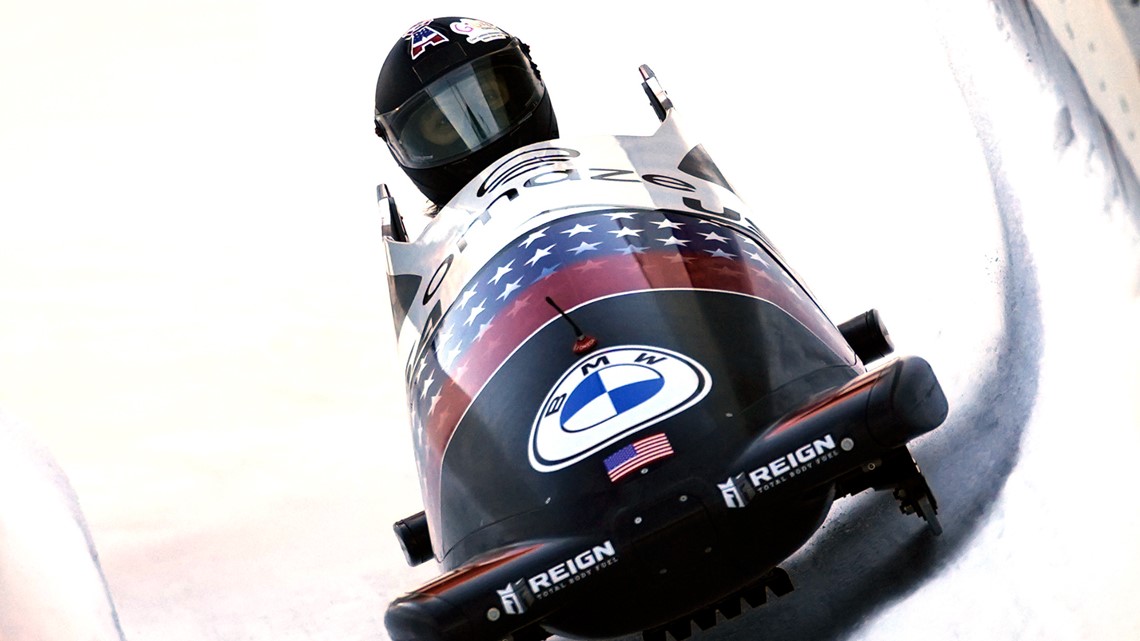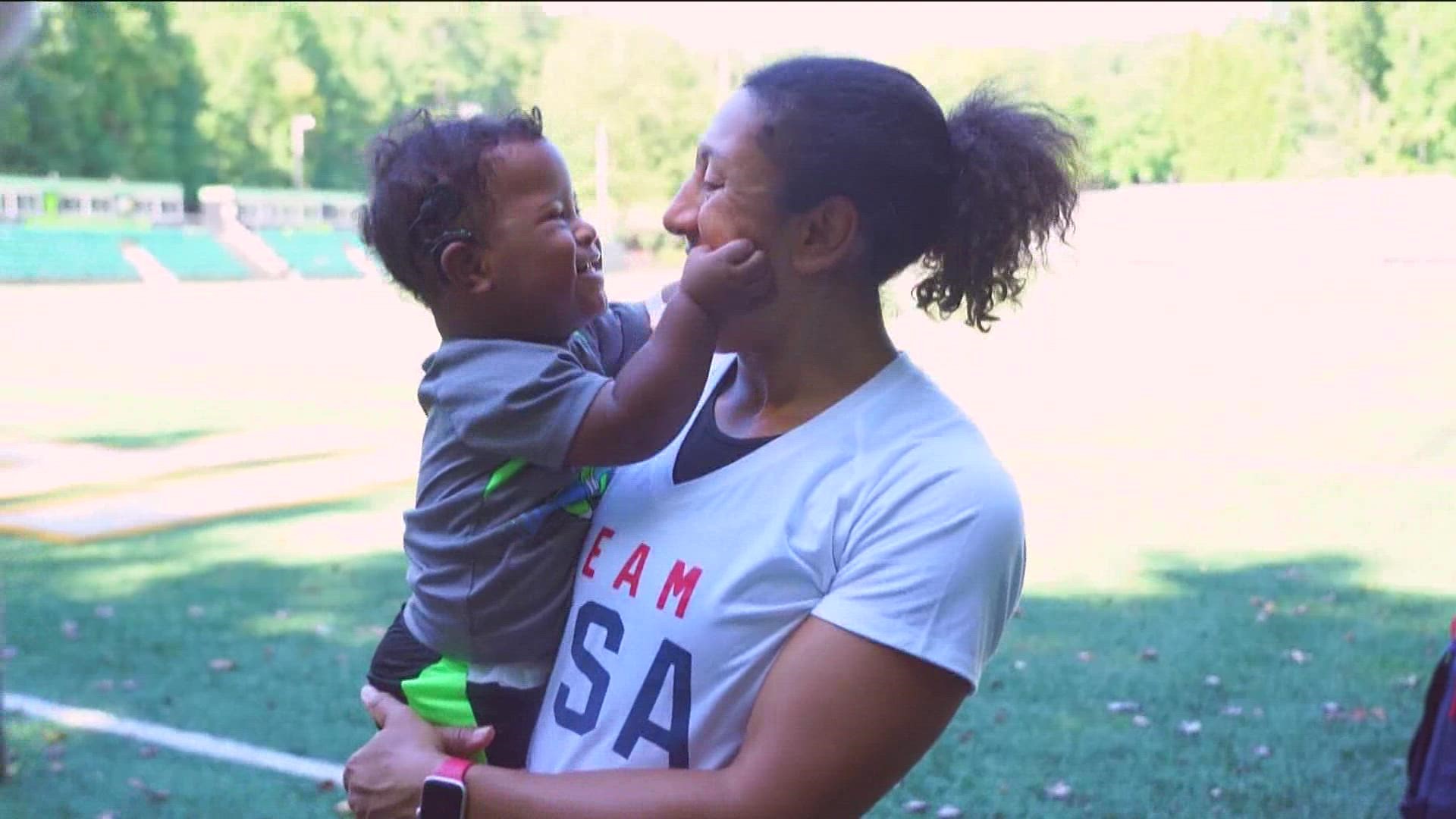BEIJING, China — On Saturday night, the newest bobsledding event will make its debut at the 2022 Winter Olympics in Beijing.
The monobob event will feature, among others, Georgia native and U.S. bobsledding legend Elana Meyers Taylor. She and fellow American teammate Kaillie Humphries are two of the favorites to bring back the first gold medal that will ever be awarded in this event.
Before they hit the track for the first two heats of the event on Saturday night - with the following two heats on Sunday night to determine the medals - here's what you'll want to know about monobob.
How does monobob work?
It's pretty simple really! It works pretty much exactly how you would think if you've ever seen any other kind of bobsled race.
The athlete pushes the bobsled off the starting line, hops in, and navigates the track in the fastest time that she can. Just the same as with the traditional two-person and four-person bobsledding Olympic events, only with one person.
The way a winner is determined is you take each time from four heats and add them up at the end. Whoever has the best cumulative time is the winner.
The most glaring difference if you're competing in a bobsled event is in the size and weights of the sled. Taylor recently spoke to Vox and compared a four-person sled to a Mack truck, a two-person sled to a sports car and a solo sled to a motorcycle.
If you've ever driven any of those, you know they are not at all similar.
But from a spectator standpoint, it mostly looks the same, just with different numbers of riders.


Why is monobob at the Olympics?
Historically there had only been three bobsledding events at the Winter Olympics - the two-man and four-man sledding events, and the two-woman sledding event.
That's a very obvious inequity between men and women competitors that the International Olympic Committee decided to finally address by adding the monobob event.
There are pros and cons to this solution, though, and there have been criticisms that it does not create a truly equitable situation.
The argument in favor of monobob is that it improves accessibility - the solo sled is smaller and cheaper than the two-person and four-person sleds, and because it requires just one athlete it creates a lower hurdle to clear for countries that don't traditionally invest a lot in bobsledding to support an athlete.
The criticism targets what is obvious - numbers. With a four-man and two-man event, there will be medals for six men at the Olympics, versus only three for women who have the two-woman and monobob events.
And that numbers discrepancy obviously goes far beyond just medals. Many more men get to go and compete at the Olympics than women under the current system, and many more women who might otherwise make the Olympic team are left at home - even though there's no reason four women couldn't compete as a full traditional bobsled team.
When are the monobob runs?
- Monobob Heat 1: Saturday night, Feb. 12, 8:30 p.m. (9:30 a.m. Sunday in Beijing), stream it here.
- Monobob Heat 2: Saturday night, Feb. 12, 10:00 p.m. (11 a.m. Sunday in Beijing), stream it here.
- Monobob Heat 3: Sunday night, Feb. 13, 8:30 p.m. (9:30 a.m. Monday in Beijing), stream it here.
- Monobob Heat 4: Sunday night, Feb. 13, 10 p.m. (11 a.m. Monday in Beijing), stream it here.

